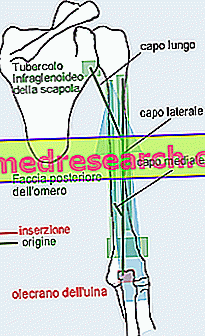Generality
Stockfish or stockfish is a preserved food of animal origin; it is the gutted and decapitated body of the cod, then dried by exposure to the cold-dry north winds. Stockfish is therefore a typical northern product, especially from Norway.

Cod (or cod) is a bony fish belonging to the Gadidae family, Genus Gadus, Species Gadus morhua .
The cod colonizes mainly the northern side of the Atlantic ocean and is absent in the Mediterranean basin, instead colonized by the hake ( Merlucius merlucius ), morphologically similar but belonging to different family, genus and species.
The term stockfish or stockfish (even just " stocco ") derives from the union of the stock or stokk (stick - store) and fish or vish (fish) substantives, then stick-fish (for hardness) or fish to stock (on special sticks exposed to the wind) or fish to be stored (in reference to the supply of ships).
Stockfish production cycle
The stockfish is processed immediately after catching the fish. The cod caught are immediately gutted and beheaded; the body is then divided in two from the back to the tail which is kept intact to keep the two edges together. At this point, the fish are placed on special wooden supports (without touching them) and left in the cold wind (temperature slightly above 0 ° C) in the absence of rain, for about 3 months (from February to May). The cycle ends with the maturation of the stockfish in a closed, cold and ventilated environment for another 60 days.
The finished food owns about 30% of the initial AW ( Activity Water ).
Discovery of stockfish in Italy
The discovery of the stockfish occurred in 1432 by chance, by the shipwrecked Venetian merchant Pietro Querrini.
On 25 April 1431 Querrini sailed from Candia (island of Crete) direct to Flanders (now Belgium) on the Querrina, a merchant ship laden with spices, cotton, wax and much more. On September 14 of the same year, having passed Cape Finistere (now western France) the merchant encountered a storm that pushed him westwards, beyond Ireland, adrift to Iceland. On December 17, with the ship totally uninhabitable, Querrini divided the surviving crew into two makeshift boats: a longboat with 18 men (of which nothing was known) and a lance with 47 souls. At the head of the latter, on 14 January 1432 the merchant moved north to Norway where, once again, he was shipwrecked to land on the island of Rost (Lofoten archipelago). Here, the crew (already reduced by 16 men) wandered for 11 days before coming across the local fishing population. Extremely cordial, the latter offered food (including stockfish) and lodging to the unfortunate sailors, who left for Bergen (a southern Norwegian city) on 15 May and finally reached Venice on 12 October 1432.
Spreading of stockfish in Italian cuisine
Stockfish has always been a popular product, therefore "almost" absent in old written recipe books handed down by cooks of high-ranking families (aristocratic, clerical and upper-middle class).
"L'Opera", by Bartolomeo Scappi (1570), quotes stockfish as a culinary-catering innovation. Also "The modern Apicius" by Francesco Leonardi, shows a recipe based on stockfish, just as the "New Milanese economic cook" by Giovanni Felice Luraschi, published in 1853, describes a preparation.
Finally, from the second half of the nineteenth century, with "Theoretical and practical cooking" by Ippolito Cavalcanti (1837) and "The science in the kitchen and the art of eating well" (1881) by Pellegrino Artusi (who however did not speak very well about it), we witnessed the total advent of recipes with stockfish (and also with cod) throughout the Italian peninsula.
Culinary preparation
At retail level, for hygienic reasons, stockfish is vacuum-packed. Upon purchase, it is hard, dry and has a rather intense odor. It is necessary that it is sufficiently thick and has a light color, devoid of yellowish shades.
The preparation of stockfish is quite long but can be summarized as follows:
- Beating: it can be carried out with a wooden pestle and is necessary to soften the fibers of the dried fish.
- Soaking: in fresh and fresh water for 3-4 days, changing the water frequently or placing it in running water.
- Precooking: preceded by washing and drying; the stockfish must then be cut, placed in a pan with cold water and brought to a boil over low heat for 10 minutes.
- Specific cooking of the recipe: variable according to the preparation, but the stockfish always requires long and delicate cooking; better to avoid mixing it and, to turn it, the pot is shaken.
Venetian style cod - Video Recipe
Venetian style cod
X Problems with video playback? Reload from YouTube Go to Video Page Go to Video Recipes Section Watch the video on youtubeNutritional characteristics
WARNING! In the food composition tables the stockfish appears as a derivative of the Melu or molo fish .
Stockfish is a food that, when analyzed in a dry form, has a very high nutritional and energy concentration. In reality, once rehydrated, the stockfish has quantities of energetic macronutrients similar to those of fresh food; on the other hand, the concentration of vitamins and, in part, even saline, are heavily affected by the process of preservation and rehydration.
Stockfish is rich in high biological value proteins, contains little fat and only a few traces of soluble sugars; from the salty point of view it provides good doses of potassium, while, as far as vitamins are concerned, there is a good concentration of niacin (vit. PP).
Soaked stockfish is a low-calorie food and, unlike cod, can be contextualised in most diets and diet therapies. Clearly, the preparations that provide for the generous addition of cooking oils are to be consumed with due moderation, as a single dish accompanied with fresh vegetables and at most 50g of bread, preferably whole or rye. Stockfish often appears on the list of foods contraindicated in the diet against hypertension; in reality, once soaked it has a rather low sodium content (unlike the cod, which maintains very high sodium concentrations even after soaking).
Nutritional composition of Stockfish - Reference values of the INRAN Food Composition Tables
| Comparison of dried stockfish and soaked stockfish | |||
| Chemical composition and energy value of foods per 100g of edible portion | Dried stockfish | Soaked stockfish | |
| Edible part | 78.0% | 85.0% | |
| water | 12, 0g | 76, 1g | |
| Protein | 80, 1g | 20, 7g | |
| Lipids TOT | 3.5g | 0, 9g | |
| B.C. saturated fats | - g | - g | |
| B.C. monounsaturated fats | - g | - g | |
| B.C. polyunsaturated fats | - g | - g | |
| Cholesterol | - mg | - mg | |
| TOT Carbohydrates | 1, 1g | 0.3g | |
| Starch / Glycogen | 0.0g | 0.0g | |
| Soluble sugars | 1, 1g | 0.3g | |
| Dietary fiber | 0.0g | 0.0g | |
| Power | 356, 0kcal | 92, 0kcal | |
| Sodium | 500, 0mg | 51, 0mg | |
| Potassium | 1500, 0mg | 340, 0mg | |
| Iron | 3, 3mg | 0.6mg | |
| Football | 60, 0mg | 9, 0mg | |
| Phosphorus | 450, 0mg | 163, 0mg | |
| Thiamine | 0, 14mg | 0, 015mg | |
| Riboflavin | 0.5mg | 0, 08mg | |
| Niacin | 3, 5mg | 1, 00mg | |
| Vitamin A | 0, 0μg | 0, 0μg | |
| C vitamin | 0, 0mg | 0, 0mg | |
| Vitamin E | - mg | - mg | |



